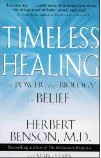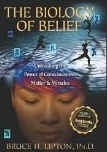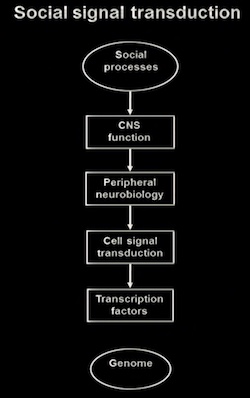The Biology of Belief and the Science of Epigenetics
Bruce Lipton basically "wrote the book" on epigenetics, and it's called Biology of Belief . Here are some of his insights from that book:
. Here are some of his insights from that book:
The function of the nervous system is to perceive the environment and coordinate the response/behavior of all cells in the body
Environmental influences, including nutrition, stress, and emotions can modify genes without changing their basic blueprint
Information that controls biology starts with environmental signals that in turn, control the binding of regulatory proteins to the DNA. The regulatory proteins direct the activity of the genes.
The malignancies in 95 percent of breast cancers are derived from environmentally-induced epigenetic alterations and not defective genes.
Humans have about the same number of genes as rodents; only 9000 more genes than fruit-flies; and only 1500 more genes than microscopic worms. How can we be so complex with so few genes?
The nucleus of a cell is simply a memory disk, a hard drive containing the DNA programs that encode the production of proteins - proteins are part of the endocrine system and they control the autonomic nervous system as well as all other bodily functions
Since each atom has its own specific energy signature (wobble or vibration), molecules radiate their own identifying energy patterns. Every material structure in the universe, including individual humans, radiates a unique energy signature.
Specific frequencies of electromagnetic radiation regulate DNA, RNA, and protein synthesis, alter protein shape and function and control gene regulation, cell division, cell differentiation, hormone secretion, nerve growth and function.
Protein synthesis, or folding, is where proteins (poly-peptide chains) are instantaneously transformed into their final three-dimensional state. The signaling speed required to make this happen is faster than is possible via a bio-chemical mechanism. In other words, the signaling seems to require electromagnetic (or faster) speeds.
Electromagnetic or acoustic vibrations can create a constructive interference or "harmonic resonance" in atoms. The atom absorbs energy and starts to vibrate faster as a result. Kidney stones have been treated by doctors with constructive interference mechanics. Focused energy waves interact with atoms.
Thoughts, the mind's energy, directly influence how the brain controls the body. Thoughts, a form of energy, can activate or inhibit the function of a cell's proteins via constructive or destructive interference.
Our conscious mind experiences the chemical communication signals between cells as emotions.
If positive thinking/emotions is good for you, imagine what negative thinking can do. See nocebo.



 "Specific frequencies and patterns of electromagnetic radiation regulate and control gene regulation, cell division, cell differentiation, morphogenesis (the process by which cells assemble into organs and tissues), hormone secretion, nerve growth and function....Though these research studies have been published in some of the most respected mainstream biomedical journals, their revolutionary findings have not been incorporated into the medical school curriculum." Bruce Lipton:
"Specific frequencies and patterns of electromagnetic radiation regulate and control gene regulation, cell division, cell differentiation, morphogenesis (the process by which cells assemble into organs and tissues), hormone secretion, nerve growth and function....Though these research studies have been published in some of the most respected mainstream biomedical journals, their revolutionary findings have not been incorporated into the medical school curriculum." Bruce Lipton: 